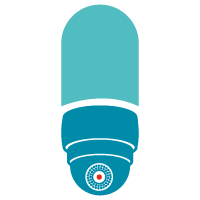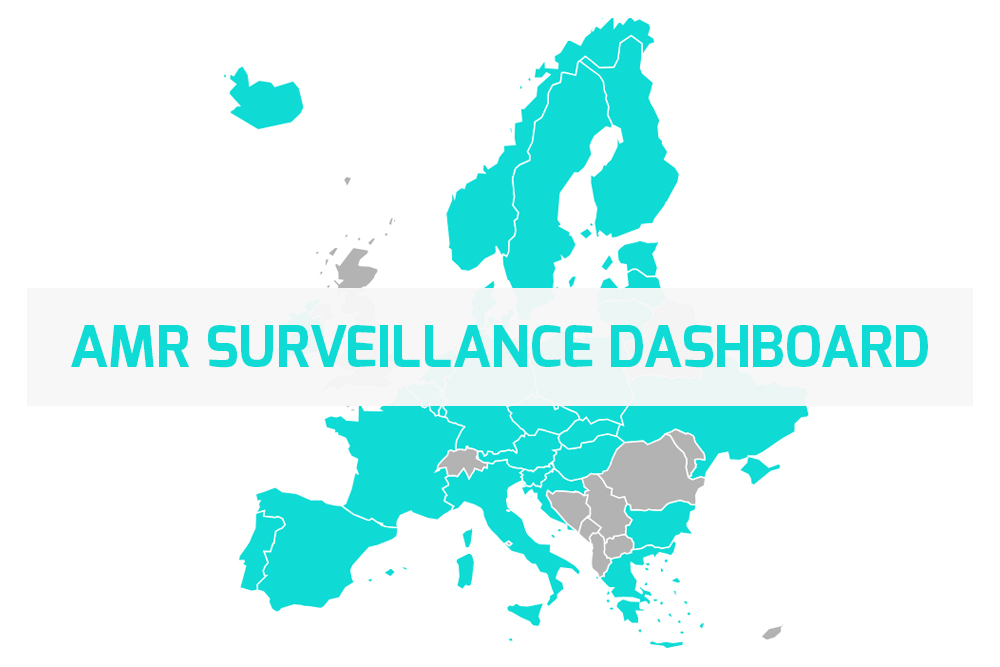SURVEILLANCE
EU-JAMRAI 2 works on improving surveillance of AMR in human health, animal health and the environment as well as from a One Health perspective.
The activities are designed to provide added value to the current surveillance landscape and to reinforce the European strategy for One Health surveillance of AMR. The goal is to fill some of the current surveillance gaps for AMR and to create a strong connection between policy and implementation of prioritised activities.
The majority of our partners are national governmental agencies and national expert laboratories. In total, 25 countries are involved. Our main stakeholders are EU and UN agencies such as ECDC, EFSA, EEA and WHO Europe.
How does the One Health surveillance work performed in EU-JAMRAI 2 support the implementation of the EU Council recommendation of AMR?
EU-JAMRAI 2 has the opportunity to serve as a link between policy and implementation. A key policy document directing our work is the 2023 Council Recommendation on stepping up EU actions to combat antimicrobial resistance in a One Health approach.
The surveillance work of EU-JAMRAI 2 supports the following recommendations:
- Developing integrated systems for the surveillance of AMR and AMC encompassing human health, animal health, plant health, food, wastewater and the environment […](5e).
- Continue to assess on the basis of EFSA opinions animal diseases caused by bacteria resistant to antimicrobials, to ascertain if it is needed to list any of those diseases in Regulation (EU) 2016/429(57) with a view to categorising them for any regulatory surveillance, control or other management measures (6).
- Guidelines for the treatment of common infections (11.a and supporting 13)
- Pathogens resistant to last line treatments are notifiable diseases under national legislation (5.b)
- Expand human AMR surveillance by including more specimen types (in addition to blood samples) (5.a)
Other policy documents of importance for the surveillance work of EU-JAMRAI 2:
- UNGA Political Declaration: A global commitment to combat antimicrobial resistance.
- Design of a monitoring framework for EU AMR policies.
- Individual countries’ National Action Plans.


Human health
EU-JAMRAI 2 works to strengthen the national systems for microbiological surveillance of AMR in the human sector.
Our vision is: “A Europe where every country has the capacity to perform, contribute to and benefit from high-quality, harmonized antibiotic resistance surveillance, regardless of size or resources.”
The key actions are to:
- Perform an inventory of the national surveillance systems available in the participating countries and visualize the results in a dashboard
- Investigate legal and information security aspects of data collection, storage and sharing as it pertains to AMR surveillance;
- Build a roadmap for national AMR surveillance.
- Perform an inventory of and build upon capacity strengthening projects on AMR surveillance in Europe.
AMR surveillance dashboard
[ACCESS THE DASHBOARD]
About the Dashboard
This dashboard presents information on current national microbiological AMR surveillance in the 28 partner countries of the EU-JAMRAI 2 consortium.
It is designed as a resource for both national and international AMR experts and policymakers who seek to better understand how AMR surveillance is conducted across Europe.
As a key analytical tool within the JAMRAI partnership, the dashboard supports ongoing efforts to strengthen and expand surveillance systems. Specifically, it can be used to:
- Identify gaps in national and European AMR surveillance and estimate their extent;
- Highlight priority areas for further development
- Explore opportunities to expand surveillance and assess the expected quality of data from such efforts;
- Determine national needs for capacity strengthening.
Key Indicators Displayed
The dashboard includes indicators from the 2023 EU Council Recommendation on AMR, such as:
- Notifiable resistant pathogens (Indicator 5.b): Under “National Surveillance”, you can see which AMR pathogens are subject to mandatory, voluntary, or no surveillance—depending on the culture material used.
- Guidelines for treatment of common infections (Indicators 11.a and supporting 13): Under “National Guidelines”, you can view which countries have national empiric treatment guidance for common infections.
A Living Project
The dashboard is an ongoing development project. We are continuously working to improve both the content and the visualization. While the focus is not on presenting AMR data itself, the dashboard adds value by mapping the surveillance structures and systems behind the data—how it is collected, organized, and used in each country. It complements existing efforts by ECDC, WHO, and the European Reference Laboratory for AMR.
Throughout the timescale of the EU-JAMRAI-2 project, we intend to continuously update the progress of national surveillance systems.
Additional Information
- You can find more details in the dashboard’s information section, including contact information for the development team.
- The information presented in the dashboard was gathered via a structured questionnaire conducted during Winter/Spring 2025. See the questionnaire here.
Progress year 1
Focus has been on setting up structures and goals for the coming work and to engage our partners. The main progress during the first year is described below.
Inventory of national AMR surveillance systems
A major achievement was the creation and launch of the inventory of national systems for microbiological surveillance of AMR in human health. A questionnaire was developed during fall 2024 together with partners and key stakeholders. The questions for the inventory were divided into three parts:
- National recommendations in place affecting AMR surveillance.
- WGS at the national reference laboratory for AMR.
- Structure and content of national AMR surveillance.
The inventory includes six different culture materials and focuses on bacterial pathogens that cause healthcare associated infections and outbreaks.
See the full questionnaire here.
Development of a dashboard
The development of a dashboard has been initiated together with the help of a working group consisting of partners from several different countries. The dashboard will visualise the information collected in the inventory. R Shiny is used to build the dashboard, and the code developed will be published regularly via a GitHub page. The first version of the dashboard will be live here on the EU JAMRAI 2 webpage in June 2025.
In addition, several activities relating to legal preconditions, capacity strengthening projects and creating a roadmap are ongoing.


Animal health
The European AMR surveillance network in veterinary medicine (EARS-Vet) was initiated during EU-JAMRAI 1 to enhance AMR surveillance in bacterial pathogens of animals (i.e., in diseased animals). To achieve full-scale implementation of EARS-Vet, this work is being further developed in EU-JAMRAI 2 by:
- Building tools to facilitate joint routine data analysis of AMR in bacterial pathogens of animals across the EU.
- Improving harmonization of laboratory methods for antimicrobial susceptibility testing of bacterial pathogens of animals: Writing an EARS-Vet manual, defining customized MIC plates, performing interlaboratory proficiency testing
- Performing Whole Genome Sequencing (WGS) analysis of phenotypes of interest
- Working towards EARS-Vet integration within the EU surveillance lanscape
EARS-Vet publications:
1. Mader, R. et al. Building the European Antimicrobial Resistance Surveillance network in veterinary medicine (EARS-Vet). Eurosurveillance 26, 2001359 (2021).
2. Mader, R. et al. Review and Analysis of National Monitoring Systems for Antimicrobial Resistance in Animal Bacterial Pathogens in Europe: A Basis for the development of the European Antimicrobial Resistance Surveillance Network in Veterinary Medicine (EARS-Vet). Frontiers in Microbiology 13, (2022).
3. Mader, R. et al. Defining the scope of the European Antimicrobial Resistance Surveillance network in Veterinary medicine (EARS-Vet): a bottom-up and One Health approach. Journal of Antimicrobial Chemotherapy 77, 816–826 (2022).
4.Lagrange, J. et al. Pilot testing the EARS-Vet surveillance network for antibiotic resistance in bacterial pathogens from animals in the EU/EEA. Frontiers in Microbiology 14, (2023).
Progress year 1
Focus has been on updating the Ears-Vet scope to align with partner priorities, as well as preparing tools and guidlines for collection of harmonized AMR data. The main progress during the first year is described below.
Facilitation of routine data collection, analysis and reporting
- An update has been made of the EARS-Vet scope to include surveillance data from horses, sheep and goats.
- A development of the EARS-Vet database and WHONET module has been performed.
- A data sharing agreement was signed by all partners in February 2025.
- The first open data call was launched in February 2025.
Efforts to improve harmonisation of the collected data
- An EARS-Vet manual has been drafted.
- The definition of customized EARS-Vet MIC plates has been decided.
In addition, selection criteria for AMR isolates to be sent for WGS were agreed upon. Several important collaborations were also established with for example EFSA, FAO InFARM, AHWP SOA8.
Environmental health
The Joint Action will promote the setting up of the environmental AMR surveillance network (EARS-Env) to:
- Collect information from countries on existing environmental surveillance and its goals and indicators.
- Pilot common environmental surveillance across countries.
- Conduct a scoping study on the use of disinfectants and fungicides in healthcare, animal settings, agriculture, treated wood, and cosmetics.
Progress year 1
Focus has been on jointly starting the process to determine objectives, common sampling strategies and indicators for environmental surveillance. The main progress during the first year is described below.
Inventory of existing surveillance of AMR in the environment
Two questionnaires on surveillance were developed and sent out to a broad target audience. The first questionnaire focuses on collecting information on existing surveillance, whereas the second one focuses on what type of surveillance we want in the future. The questionnaire responses will be used to develop strategies and objectives for the Ears-Env surveillance program and will be tested in a pilot study across countries.
Alignment with other sectors and initiatives at different levels
Several other initiatives that target environmental surveillance are ongoing, to which EUJAMRAI 2 have established links and collaborations:
- The Joint Action EU-WISH
- Eionet and the quadripartite integrated surveillance
- The Urban Wastewater Treatment Directive
In addition, activities have been initiated to receive input from the human and animal health sectors on indicators that they would like to include in environmental surveillance.


National One Health reports
EU-JAMRAI 2 will map and evaluate the One Health-ness of national surveillance systems, including aspects of AMR/AMC data accessibility and data quality, and formulate common suggestions for improvements. It will facilitate the development of One Health surveillance reports in participating countries and the creation of interactive dashboards to visualise surveillance data to inform policy actions.
Progress year 1
The focus in year one has been on mapping the surveillance landscape in each participating country and discussing what surveillance programs and data to include in national One Health surveillance reports. The main progress during the first year is described below.
Survey to map national AMR surveillance systems
Together with participating countries, a survey to describe existing national AMR surveillance programs was developed, with one coordinator per country collecting data on all active programs within their national surveillance system. The survey contained questions about national surveillance programs and available data related to AMR and antimicrobials in the different sectors (human health, animal health and the environment).
The resulting maps will serve as a first step to prepare national One Health surveillance reports and in building One Health AMR networks of relevant actors across sectors. The OH-Epicap tool will be used to evaluate the One Health-ness of national AMR surveillance systems, providing diagnostics of each system’s strengths and weaknesses and suggesting concrete actions to improve collaboration across the system.
In addition, discussions have been initiated about key indicators for potential use in One Health AMR surveillance in Europe. The common view and future aspects of such surveillance will be addressed in a white paper.

